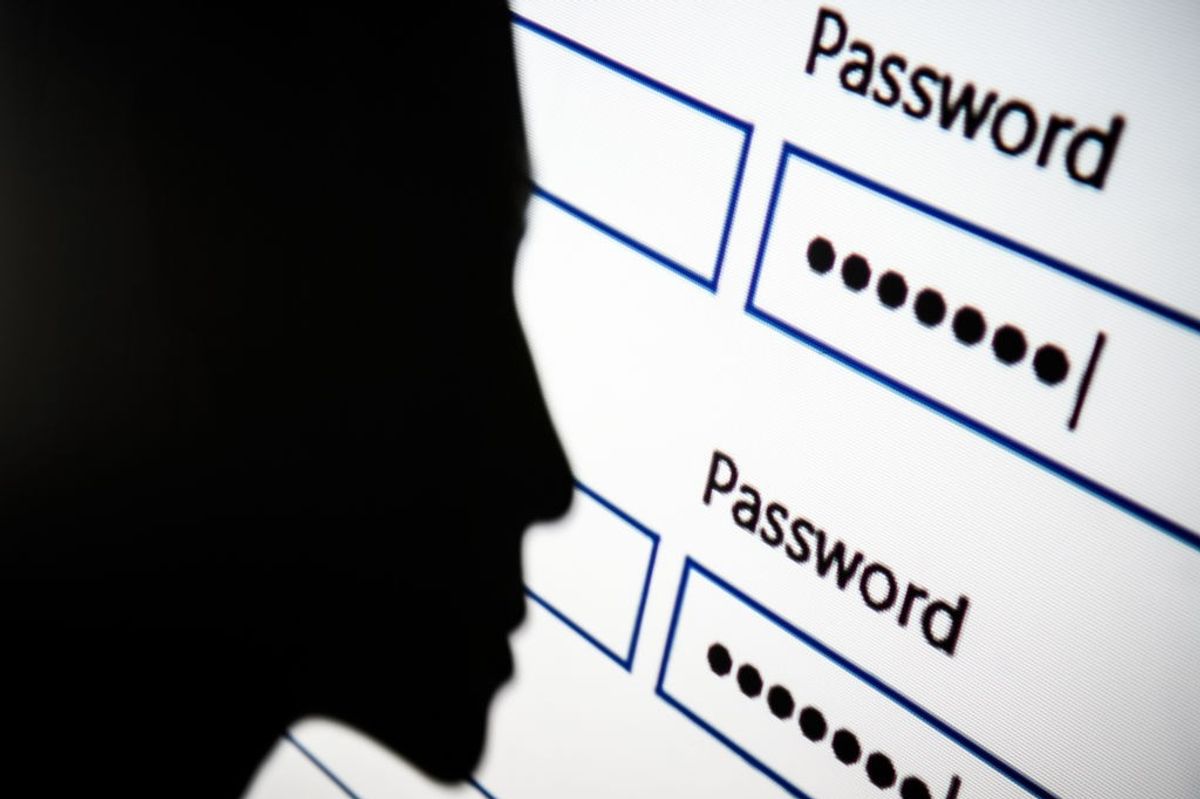EXPERT PERSPECTIVE — When we think about the arteries of global power, images of oil pipelines or shipping lanes often come to mind. They are visible, tangible, and easy to picture on a map. The digital world has its own arteries, equally vital but far less visible: undersea cables, satellites, and semiconductor supply chains. These systems allow our economies to function, our militaries to coordinate, and our societies to remain connected.
We rarely stop to consider how very fragile they are. A fiber-optic cable lying quietly on the seabed, a satellite orbiting high above, or a single Dutch firm making the machines that build the world’s most advanced chips? Each represents a potential point of failure. And when one of them falters, whether by accident or design, the consequences ripple instantly across the globe. What makes this even more concerning is that adversaries understand their potential value. They have studied the geography of our digital world with the same intensity that past powers studied maritime routes. Increasingly, they are testing ways to hold these chokepoints at risk, not in open war, but in the murky space called the gray zone.
Consider the seabed. Nearly all intercontinental internet traffic runs not through satellites, as many imagine, but along the ocean floor. The “cloud” is, in truth, anchored to the seabed. These cables are resilient in some respects, yet highly vulnerable in others. Russia has long deployed specialized vessels (such as the Yantar) to loiter near critical routes, mapping them and raising concerns about sabotage. The People’s Republic of China has taken subtler approaches. On several occasions, cables linking Taiwan’s outlying islands have been cut by Chinese vessels in incidents they described as accidental. Taipei viewed them, by contrast, as deliberate acts of pressure that left communities offline for weeks.
Nature has been no less disruptive. A volcanic eruption severed Tonga’s only international cable in 2022, cutting off connectivity entirely. A landslide off Côte d’Ivoire in 2024 damaged four cables at once, leaving more than a dozen African states scrambling to restore service. These episodes remind us that chokepoints need not be destroyed to reveal their importance.
For China, the issue is a strategic one. Through its Digital Silk Road initiative, Beijing has financed and built cables across Asia, Africa, and Europe. Chinese firms now sit at landing stations and repair depots. In times of peace these investments look like connectivity. In times of crisis, they can become instruments of leverage or coercion.
Sign up for the Cyber Initiatives Group Sunday newsletter, delivering expert-level insights on the cyber and tech stories of the day – directly to your inbox. Sign up for the CIG newsletter today.
The same logic applies in orbit. Satellites and global navigation systems act as the nervous system of modern life. They time banking transactions, guide aircraft, and support military operations. Disrupting them unsettles the rhythms of daily existence. Russia previewed this dynamic in 2022 when it launched a cyberattack against the Viasat KA-SAT network on the first day of its invasion of Ukraine. Thousands of modems across Europe went dark, cutting off critical communications. More routinely, Russian jamming and spoofing around Kaliningrad and Moscow have disoriented navigation systems, with civilian pilots suddenly reporting the loss of GPS mid-flight.
China has created its own path through BeiDou, a rival to GPS that is already woven into infrastructure and commerce across large swaths of the world. Countries adopting BeiDou for civilian uses also create dependencies that, in a crisis, could become channels of influence. China’s so-called inspector satellites, capable of shadowing Western systems in orbit, serve as a reminder that the domain is contested and difficult to police. Jamming, spoofing, or orbital surveillance are rarely attributable in real time. They can be dismissed as interference or technical glitches even when deliberate. That ambiguity is precisely what makes them effective tools of gray-zone leverage.
Vulnerability also extends to the factories that produce the silicon chips powering the digital age. No chokepoint illustrates fragility more starkly than semiconductors. Advanced chips are the foundation of artificial intelligence, modern weapons systems, consumer electronics, modern automobiles, and more. Yet their production is concentrated in very few hands. One company in Taiwan manufactures most of the world’s leading-edge chips. A single Dutch firm produces the extreme ultraviolet lithography machines needed to make them. And China has demonstrated repeatedly how control over upstream minerals can be wielded as leverage. Restrictions on gallium, germanium, and graphite have caused immediate price spikes and sent Western companies scrambling for alternatives.
The global chip shortage during the pandemic provided a glimpse of how disruption can have cascading impacts. Automotive plants shut down, electronics prices soared, and entire supply chains stalled. That was the result of market forces. In a geopolitical crisis, disruption would be intentional, targeted, and likely more devastating.
The Cipher Brief brings expert-level context to national and global security stories. It’s never been more important to understand what’s happening in the world. Upgrade your access to exclusive content by becoming a subscriber.
None of these vulnerabilities exist in isolation. Together, they form part of a broader and comprehensive strategy, particularly for China, where digital infrastructure has become a deliberate instrument of national power. Through the Digital Silk Road, through export controls on critical minerals, through investments in semiconductor capacity, through an ambitious national AI strategy, and BeiDou’s global adoption, Beijing is systematically building positions of leverage.
Is this preparation for an open assault on global systems? Maybe not, but it is a strategy designed for options in the gray zone. By holding digital chokepoints at risk, China can complicate allied decision-making and cast doubt on the reliability of critical systems, thereby slowing or obstructing responses at moments when speed is decisive. The ambiguity of each incident – whether it appears to be an accident, a policy choice, or something more calculated – becomes a tool of coercion.
The reality is that these risks cannot be eliminated. The very efficiency of the digital age depends on concentration. A single company leads in chipmaking, a limited set of satellites provides global timing, and relatively few cables carry the world’s data vast distances across the open ocean. Efficiency brings tremendous capability, but it also brings fragility. And fragility invites exploitation.
The counterweight must be resilience. That means redundant routes and suppliers, pre-positioned repair capacity, diversified supply chains, hardened infrastructure, and rehearsed recovery plans. The point is to recover and regain capacity as quickly as possible. To do so requires deeper public-private partnerships and closer coordination among allies, since no nation can protect these domains on its own. Resilience is not a one-time investment but a cultural shift. A culture that assumes disruption will come, prepares for it, and ensures that no single outage or shortage can paralyze us.
History offers some perspective. Nations once fought to control straits, canals, and oil fields. They still do so today, but increasingly our chokepoints are digital, hidden from sight yet just as consequential. Whoever shapes them, shapes the balance of global power.
Global stability today depends on foundations that are often invisible. Fiber-optic cables under the sea, satellites crossing the skies, and factories producing chips with microscopic precision form the backbone of our digital age. They showcase human ingenuity while highlighting profound vulnerabilities. Recognizing the duality of innovation’s promise alongside its fragility may be the most important step toward protecting what matters most in the digital age. And, yes, we must defend these technologies. But it’s about something bigger. It’s about ensuring that the digital world we depend on remains a source of strength, and not a lever of coercion.
All statements of fact, opinion, or analysis expressed are those of the author and do not reflect the official positions or views of the U.S. Government. Nothing in the contents should be construed as asserting or implying U.S. Government authentication of information or endorsement of the author's views.
The Cipher Brief is committed to publishing a range of perspectives on national security issues submitted by deeply experienced national security professionals.
Opinions expressed are those of the author and do not represent the views or opinions of The Cipher Brief.
Have a perspective to share based on your experience in the national security field? Send it to Editor@thecipherbrief.com for publication consideration.
Read more expert-driven national security insights, perspective and analysis in The Cipher Brief














